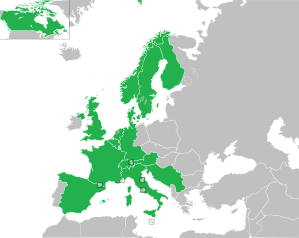Eurovision Young Dancers 1987
| Eurovision Young Dancers 1987 | |
|---|---|
| Dates | |
| Final | 31 May 1987 |
| Host | |
| Venue | Schlosstheater Schwetzingen, Schwetzingen, Germany |
| Presenter(s) | Margot Werner |
| Directed by | Hugo Käch |
| Executive producer | Harro Eisele |
| Host broadcaster | Zweites Deutsches Fernsehen (ZDF) |
| Interval act | Arne Fagerholt in Kjersti Alverberg's 'Spirits' |
| Participants | |
| Number of entries | 14 |
| Debuting countries | |
| Withdrawing countries | None |
| Vote | |
| Voting system | A professional jury chose the top 3 participants. |
| Winning dancers |
|
The Eurovision Young Dancers 1987 was the second edition of the Eurovision Young Dancers, held at the Schlosstheater Schwetzingen, Germany on 31 May 1987. Organised by the European Broadcasting Union (EBU) and host broadcaster Zweites Deutsches Fernsehen (ZDF), dancers from fourteen countries participated in the televised final. Austria, Canada, Denmark and Yugoslavia made their début at the contest.
For the first time ever, the Canadian Broadcaster CBC (EBU Associate Member) joined the show with its participant. The participant countries could send one or two dancers, male or female, that could not be older than 20. Each entry consisted in one or two dances with no rules or limitations regarding the style. The dances could not be longer than 5 minutes (for soloists) or 10 minutes (for couples).
Rose Gad Poulsen and Nikolaj Hübbe of Denmark won the contest, with Switzerland and West Germany placing second and third respectively.
Schlosstheater Schwetzingen (Schwetzingen palace theater), a court theater in Schwetzingen, Baden-Württemberg, Germany was the host venue for the 1987 edition of the Eurovision Young Dancers.
The historic building, opened in 1753, is part of Schloss Schwetzingen and since 1952 the principal venue of the Schwetzingen Festival. It is also called Hoftheater (court theater), Hofoper (court opera), and Comoedienhaus (comedy house). The frequently applied name Rokokotheater (Rococo theater) is misleading, because it shows also neoclassical elements, added in 1762.
The format consists of dancers who are non-professional and between the ages of 16–21, competing in a performance of dance routines of their choice, which they have prepared in advance of the competition. All of the acts then take part in a choreographed group dance during 'Young Dancers Week'.
...
Wikipedia


